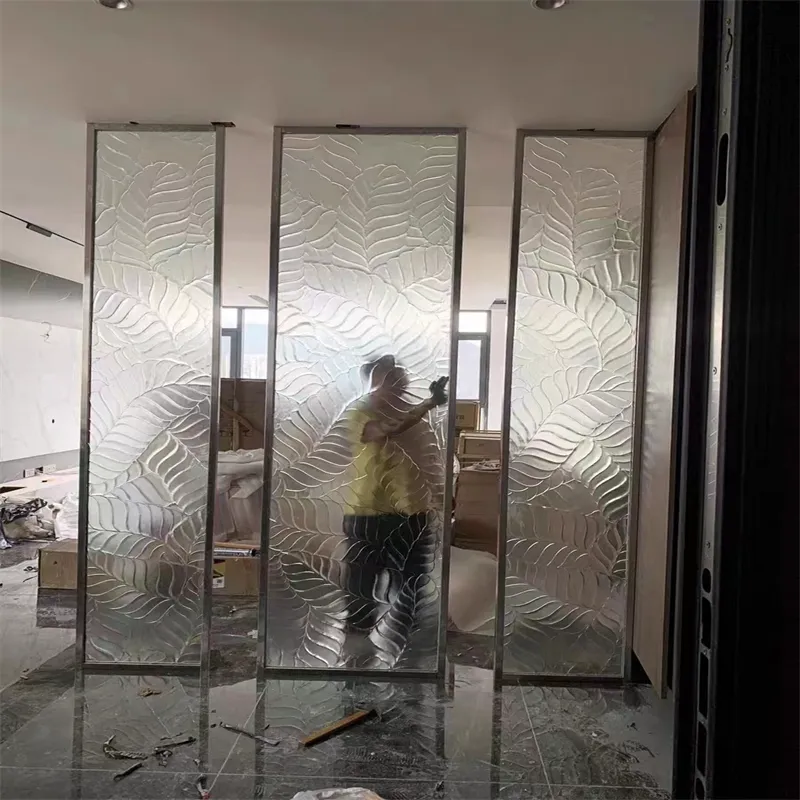10 月 . 17, 2024 21:22 Back to list
Exploring the Benefits and Applications of Coated Float Glass in Modern Architecture
The Rise of Coated Float Glass Enhancing Performance and Aesthetics
In recent years, the architectural and construction industries have seen a significant rise in the use of coated float glass. This innovative material not only elevates the aesthetic appeal of buildings but also enhances their performance in terms of energy efficiency and sustainability. Coated float glass is made by applying a thin layer of metallic or non-metallic coating to standard float glass, resulting in a product that offers numerous advantages over traditional glass options.
Understanding Coated Float Glass
Float glass is produced by the float glass process, where molten glass is floated on top of molten tin, allowing for an exceptionally smooth and uniform surface. While standard float glass offers transparency and basic protection, its thermal and reflective properties are limited. Coatings can be applied during manufacturing or through post-production processes to improve specific features such as solar control, low-emissivity (low-E), and aesthetics.
There are several types of coatings used in float glass, including reflective coatings that enhance sunlight reflection, absorptive coatings that reduce glare, and low-E coatings that minimize heat transfer. Each of these coatings serves a distinct purpose and can be selected based on the specific requirements of a project.
Advantages of Coated Float Glass
1. Energy Efficiency One of the most significant benefits of coated float glass is its ability to improve energy efficiency. Low-E coatings are designed to reflect infrared radiation while allowing visible light to pass through. This means buildings can maintain comfortable indoor temperatures without excessive reliance on heating or cooling systems, leading to reduced energy consumption and lower utility bills.
2. Glare Reduction In environments with a considerable amount of natural light, glare can become a nuisance. Coated float glass, particularly those with absorptive coatings, minimizes glare while still allowing for ample light to enter a space. This is especially beneficial in office buildings, schools, and homes with large windows.
coated float glass

3. UV Protection Coated float glass can also filter out harmful ultraviolet (UV) rays, which can cause fading in furniture, artwork, and other interior elements. By blocking a significant amount of UV radiation, coated glass helps preserve the integrity of interior spaces and extends the lifespan of valuable items.
4. Aesthetic Versatility Coatings can be tailored to achieve various aesthetic effects. For instance, metallic coatings can impart a reflective appearance, giving buildings a modern and polished look. Additionally, colored coatings can be used to harmonize with the surrounding environment or the building's design theme, offering architects and designers greater creative freedom.
5. Durability Many coated float glass products are designed to withstand exposure to the elements. Coatings can enhance the glass's resistance to scratches, corrosion, and environmental damage, ensuring that the material remains functional and attractive for years to come.
Applications in Modern Architecture
Coated float glass has found its way into a diverse range of applications, ranging from residential buildings to large-scale commercial projects. In skyscrapers, for instance, the use of reflective coatings helps to manage the considerable amounts of sunlight that can enter a building, reducing the need for artificial lighting during the day. In residential settings, homeowners benefit from energy-efficient windows that maintain comfortable temperatures while providing unobstructed views.
In more specialized applications, such as healthcare facilities, coated float glass is utilized for its anti-reflective properties, allowing for better visibility and reducing stress on patients who may be sensitive to bright lights. Moreover, in the automotive industry, coated glass is increasingly used in vehicle windows to enhance thermal performance and improve passenger comfort.
Conclusion
Coated float glass represents a significant advancement in glass technology, combining aesthetics with functionality. As architects and designers continue to prioritize sustainability and energy efficiency, the reliance on coated float glass is expected to grow. Its ability to provide solutions to various challenges in modern construction underscores the material's role as an essential component in the architectural landscape of the future. With continued innovations and advancements in coating technologies, coated float glass is poised to lead the way in building design for years to come.
-
Wired Glass: A Strong and Secure Glass Solution for Various Applications
NewsNov.04,2024
-
Tinted Glass: A Stylish and Functional Choice for Modern Homes
NewsNov.04,2024
-
The Elegance and Versatility of Silver Mirrors
NewsNov.04,2024
-
The Advantages of Copper Free Mirrors
NewsNov.04,2024
-
Tempered Glass: A Reliable Choice for Modern Applications
NewsNov.04,2024
-
Pattern Glass: Stylish and Functional Glass for Modern Design
NewsNov.04,2024
Related PRODUCTS














